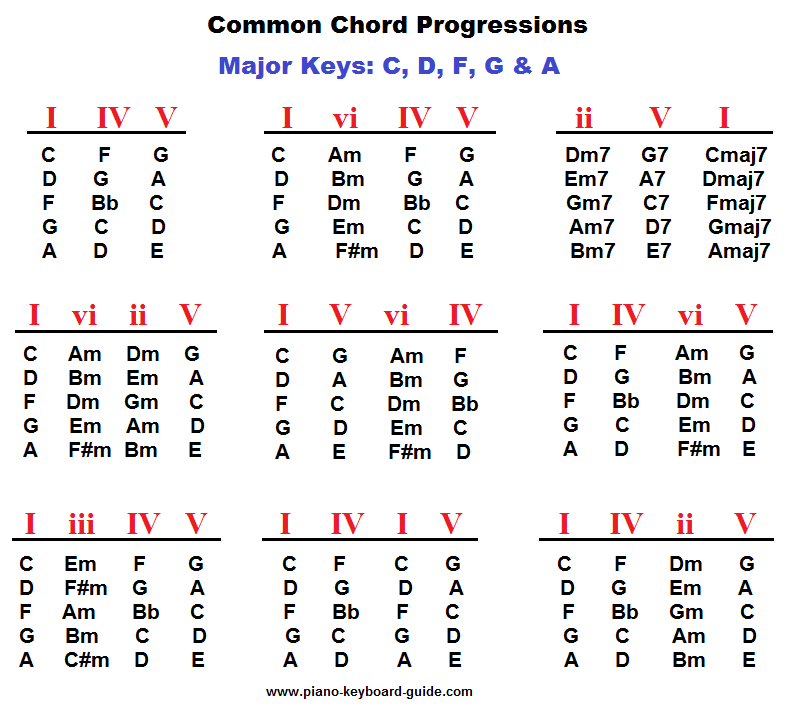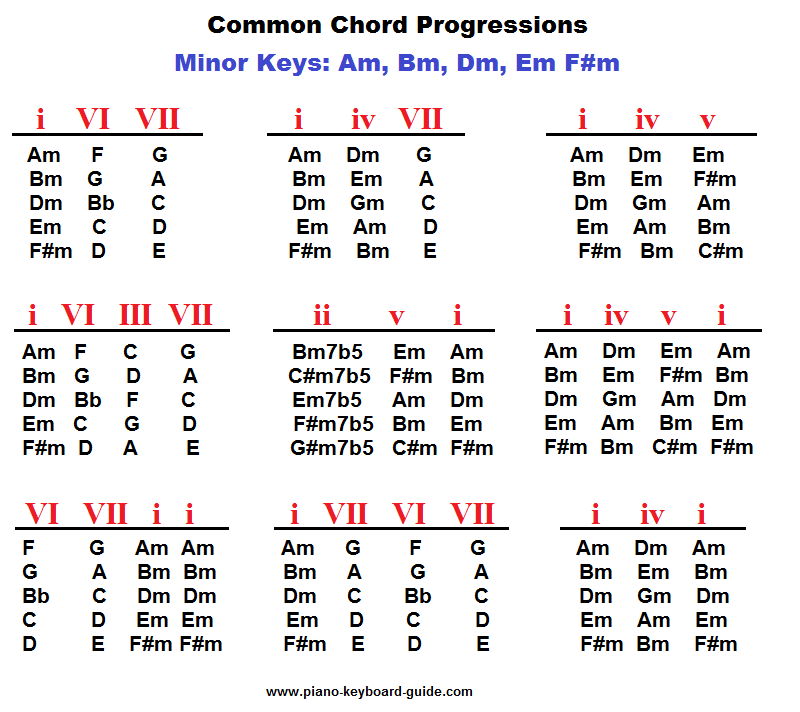"Learning basic music theory is essential for enhancing creativity and developing a keen sense of musical awareness. It is a challenging, but rewarding set of skills to learn. "
There are 12 notes in the music theory :
A- A# -B -C- C# -D -D# -E -F -F# -G -G#
Intervals
An interval is a distance between two notes. There are several different intervals. We measure these intervals by the number of half steps, whole steps, and their position in the scale. A half step interval is one semitone. A whole step interval is two semitones. Two half steps make a whole step.
Moreover, intervals are the foundation of both harmony and melody. Playing two or more notes at the same time creates harmonic intervals (chords). Playing a single note one after the other creates melodic intervals (melodies).
OCTAVES
The next highest or lowest pitch of the same note. For example, an octave up from C1 on a piano is C2. An octave down would be C0. There are 12 semitones in the octave.
KEY SIGNATURES
Key signatures tell you what notes in a scale are sharp or flat. They also help you identify the key of a song, which is the tonal center. For example, a song in the key of A minor uses notes from the A minor scale. There are twelve key signatures, each derived from the twelve available notes.
Scale
A musical scale is a set of notes within an octave arranged by their pitch. Mainly there are two kinds of scales i.e. major scale and minor scale. Using these scales other scales are derived.
Major scale :
The major scale is made up of 7 notes with the first note repeated it is called an octave.
E.g:
C - D - E- F -G -A -B -C
Formula :
OCTAVES
The next highest or lowest pitch of the same note. For example, an octave up from C1 on a piano is C2. An octave down would be C0. There are 12 semitones in the octave.
KEY SIGNATURES
Key signatures tell you what notes in a scale are sharp or flat. They also help you identify the key of a song, which is the tonal center. For example, a song in the key of A minor uses notes from the A minor scale. There are twelve key signatures, each derived from the twelve available notes.
Scale
A musical scale is a set of notes within an octave arranged by their pitch. Mainly there are two kinds of scales i.e. major scale and minor scale. Using these scales other scales are derived.
Major scale :
The major scale is made up of 7 notes with the first note repeated it is called an octave.
E.g:
C - D - E- F -G -A -B -C
Formula :
W -W- H -W-W-W-H

Minor scale:
Eg: C- D- D#- F- G- G#- A#- C
Formula: W -H -W-W-H-W-W
This formula is the same sequence as the major scale formula, but it begins on a different note.

Pentatonic scale :
Pentatonic scales contain five notes, which is how it gets its name (Penta=5, tonic = tones)
There is a major pentatonic scale and a minor pentatonic scale. The awesome part is that they contain the same note intervals (with differing roots), so the patterns are the same.
There is a major pentatonic scale and a minor pentatonic scale. The awesome part is that they contain the same note intervals (with differing roots), so the patterns are the same.
Minor pentatonic scale:
Formula : 1 -b3 -4 -5 -b7.
C Eb F G Bb
Common Scale Formulas:
Major scale = 1 2 3 4 5 6 7 (C D E F G A B)
Minor scale = 1 2 b3 4 5 b6 b7 (C D Eb F G Ab Bb)
Minor pentatonic scale = 1 b3 4 5 b7 (C Eb F G Bb)
Formula : 1 -b3 -4 -5 -b7.
C Eb F G Bb
Common Scale Formulas:
Major scale = 1 2 3 4 5 6 7 (C D E F G A B)
Minor scale = 1 2 b3 4 5 b6 b7 (C D Eb F G Ab Bb)
Minor pentatonic scale = 1 b3 4 5 b7 (C Eb F G Bb)
Blues scale = 1 b3 4 b5 5 b7 (C Eb F Gb G Bb)
Major pentatonic scale = 1 2 3 5 6 (C D E G A)
Major pentatonic scale = 1 2 3 5 6 (C D E G A)
Harmonic minor scale = 1 2 b3 4 5 b6 7 (C D Eb F G Ab B)
Melodic minor scale = 1 2 b3 4 5 6 7 (C D Eb F G A B)
Melodic minor scale = 1 2 b3 4 5 6 7 (C D Eb F G A B)
Ionian scale = 1 2 3 4 5 6 7 (C D E F G A B)
Dorian scale = 1 2 b3 4 5 6 b7 (C D Eb F G A Bb )
Dorian scale = 1 2 b3 4 5 6 b7 (C D Eb F G A Bb )
Phrygian scale = 1 b2 b3 4 5 b6 b7 (C Db Eb F G Ab Bb)
Lydian scale = 1 2 3 #4 5 6 7 (C D E F# G A B)
Lydian scale = 1 2 3 #4 5 6 7 (C D E F# G A B)
Mixolydian scale = 1 2 3 4 5 6 b7 (C D E F G A Bb)
Aeolian scale = 1 2 b3 4 5 b6 b7 (C D Eb F G Ab Bb)
Locrian scale = 1 b2 b3 4 b5 b6 b7 (C Db Eb F Gb Ab Bb)
Whole tone scale = 1 2 3 #4 #5 b7 (C D E F# G# Bb)
Whole-Half Diminished = 1 2 b3 4 b5 b6 6 7 (C D Eb F Gb Ab A B)
Half-Whole Diminished = 1 b2 b3 3 b5 5 6 b7 (C Db Eb E F# G A Bb)
Chord progression
A chord progression or harmonic progression is a succession of musical chords, which are two or more notes, typically sounded simultaneously. The term chord progression simply refers to the order in which chords are played in a song/piece of music. The chords in a progression are represented by roman numerals and are determined by key.
Major chord progression
Chord I is a major chord, chord ii is a minor chord, iii is minor, IV is major, V is major, vi is minor and vii° is a diminished chord. In the C major key this would give us the chords, C major, D minor, E minor, F major, G major, A minor and B diminished.
i.e : I-ii-iii-IV-V-vi-VIIø Common piano chord progressions in major keys include the following:

Minor chord progression
The sequence of chords for the minor scale is minor-diminished-major-minor-minor-major-major.Roman numerals indicate the position of notes in the minor scale. They are i-ii°-III-iv-v-VI-VII. Small letters represent notes, 1, 2, 4 and 5, while capital letters represent notes, 3, 6 and 7.

Circle of Fifths

Aeolian scale = 1 2 b3 4 5 b6 b7 (C D Eb F G Ab Bb)
Locrian scale = 1 b2 b3 4 b5 b6 b7 (C Db Eb F Gb Ab Bb)
Whole tone scale = 1 2 3 #4 #5 b7 (C D E F# G# Bb)
Whole-Half Diminished = 1 2 b3 4 b5 b6 6 7 (C D Eb F Gb Ab A B)
Half-Whole Diminished = 1 b2 b3 3 b5 5 6 b7 (C Db Eb E F# G A Bb)
Chord progression
A chord progression or harmonic progression is a succession of musical chords, which are two or more notes, typically sounded simultaneously. The term chord progression simply refers to the order in which chords are played in a song/piece of music. The chords in a progression are represented by roman numerals and are determined by key.
Major chord progression
Chord I is a major chord, chord ii is a minor chord, iii is minor, IV is major, V is major, vi is minor and vii° is a diminished chord. In the C major key this would give us the chords, C major, D minor, E minor, F major, G major, A minor and B diminished.
i.e : I-ii-iii-IV-V-vi-VIIø Common piano chord progressions in major keys include the following:
- I – IV – V
- I – vi – IV – V
- ii – V – I

Minor chord progression
The sequence of chords for the minor scale is minor-diminished-major-minor-minor-major-major.Roman numerals indicate the position of notes in the minor scale. They are i-ii°-III-iv-v-VI-VII. Small letters represent notes, 1, 2, 4 and 5, while capital letters represent notes, 3, 6 and 7.
Common piano chord progressions in minor keys. They are as follows:
- i – VI – VII
- i – iv – VII
- i – iv – v
- i – VI – III – VII
- ii – v – i

Circle of Fifths
The circle of fifths is the relationship among the 12 tones of the chromatic scale, their corresponding key signatures, and the associated major and minor keys. Looking at the circle:
- the outer section shows the actual key signatures
- the capital letters represent the corresponding major keys
- the lowercase letters represent the corresponding minor keys
The Fifths
The reason it’s called the circle of fifths is because of the interval relationships between each key signature.
Let’s start at C Major and work our way clockwise.

- G is a 5th up from C
- D is a 5th up from G
- A is a 5th up from D
- E is a 5th up from A
- and so on…
The same applies to the minor keys (on the inner circle). Let’s start with A Minor.
- E is a 5th up from A
- B is a 5th up from E
- F# is a 5th up from B
- C# is a 5th up from F#
- and so on…
The Circle of Fourths?
Occasionally, someone will call the circle of fifths the “circle of fourths,” because if you move around the circle counterclockwise, you will see the progression moves by fourths. however this is much less common, and most refer to fifths.
Comments
Post a Comment